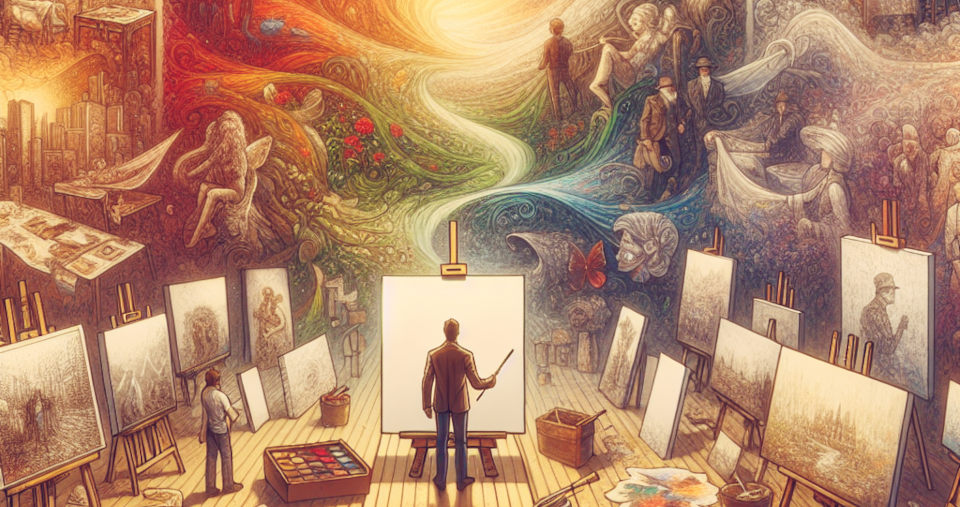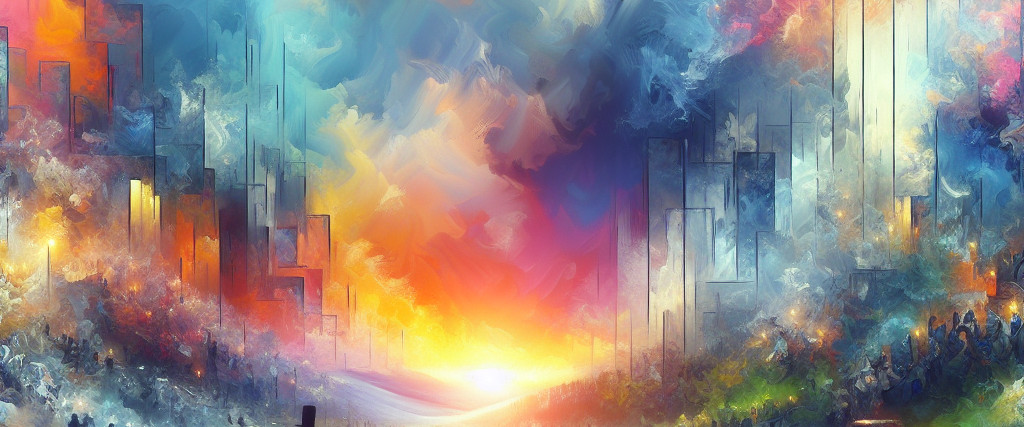The Artistic Journey Is Really Just Business

I have always been fascinated by the world of art, mesmerized by the way I can take a blank canvas and transform it into into a masterpiece (at least to me) that evokes emotions and tells stories. It is this passion that has led me on a new endeavor – to become a successful artist, or at least sell some of my work.
Embarking on this artistic journey feels both exhilarating and daunting. Like an explorer venturing into uncharted territory, I am armed with my paintbrushes and determination. However, success in the art world requires more than just talent; it requires strategy and perseverance.
Being an Artist Isn’t Enough You Need Business Sense
I think that one of the main reasons many of us fail to make it with our art is that we don’t look at it from the right perspective. For example, take a mirror. It gives us the opportunity to see ourselves but from the opposite side. That’s what success takes. That other perspective.
To navigate this vast landscape of opportunities and challenges, I’ve found it helpful to draw analogies from different fields. Becoming a successful artist is akin to building a business. It’s not enough to create beautiful artwork; you must also market yourself and establish connections within the industry.
Just as an entrepreneur invests in business cards to showcase their brand and make a memorable first impression, artists can do the same. Just imagine an artist business card as a tiny canvas that represents your artistic identity and talent. It serves as an introduction to your work, leaving a lasting impression on potential buyers, art collectors, or collaborators.
However, it is important to note that simply having business cards is not enough to propel your artistic career forward. Anybody can do that, I ordered a set recently (I got the opal stone design because it had an ample amount of glitter in the motif), they are sitting there waiting on me to start using them. I’m happy with the card design I choose for now, it represents me and it makes a good impression so that when the time comes I can feel confident handing them out.
Because that’s what you need to do, get out there.
Building connections and establishing relationships within the art world is crucial for artists seeking recognition and sales. Much like networking events play a vital role in the entrepreneurial arena, attending art exhibitions, galleries, and workshops can provide invaluable opportunities to meet fellow artists and industry professionals who may open doors of opportunity for you.
Just think of these events as your equivalent of trade shows or conferences in the business world. They offer a platform for you to showcase your artwork to a wider audience, receive feedback from experts in the field, and establish connections with potential buyers or collaborators. These interactions can lead to commissions, gallery representation, or even collaborative projects that can elevate your artistic career to new heights.
By actively participating in these events and engaging with others in your field, you are not only expanding your network but also immersing yourself in the vibrant art community. This exposure can fuel inspiration and provide valuable insights into different styles, techniques, and trends prevalent in the art world.
So don’t just rely on passive methods of promoting your artwork; take charge of your artistic journey by actively seeking out opportunities to interact with fellow artists and industry professionals. Attend exhibitions, join artist collectives or associations, participate in workshops – these activities will not only enhance your visibility but also enrich your understanding of the ever-evolving art landscape.
Remember that building connections takes time and effort – just like nurturing any relationship does. So be patient yet proactive in forging meaningful connections that can contribute positively to both your personal growth as an artist and the success of your artistic endeavors.
It is a Journey, It Takes Time

While embarking on this artistic journey anew, it is vital to approach it with cautionary advice in mind. Selling artwork can be challenging, especially in competitive markets saturated with talented individuals vying for attention. It’s essential to manage expectations and understand that success may not come overnight.
Instead of fixating solely on selling your work immediately, consider alternative methods or approaches that align with your long-term goals as an artist. Perhaps you could explore collaborations with other artists or participate in community projects that allow you to showcase your talent while building a reputation within your local art scene.
When it comes to refining your craft, seeking inspiration from external sources can be immensely beneficial. Look to renowned artists throughout history who have left their mark on the world. Dive into books written by respected art critics or art history experts that shed light on different movements and techniques. By exploring diverse perspectives, you can expand your own artistic horizons.
As I tread this path towards success, I am reminded of my personal experiences and anecdotes that have shaped my understanding of the artistic journey. I recall the initial imperfections in my early works and how perseverance and a positive mindset allowed me to grow as an artist, steadily improving with each stroke of my brush.
Furthermore, historical context plays a significant role in understanding the challenges faced by artists through time. Take Vincent van Gogh, for instance. Despite his immense talent, he struggled to sell his work during his lifetime. Yet today, he is regarded as one of the most influential artists of all time. His story reminds us that greatness often goes unrecognized initially but can endure and flourish over time.
Technically speaking, honing specific functionalities and features in your artwork is crucial for standing out among the crowd. What makes you, you? Experimenting with different styles or techniques allows you to develop a unique voice while expanding your creative repertoire.
Additionally, embracing diverse forms of art and music can help refine your taste and inspire your own creations. I’ve found that comparing different artists, musicians, composers, etc., not only highlights their unique qualities but also encourages personal growth as an artist. What resonates with one person may not resonate with another—it’s all about exploring diverse perspectives and overcoming limitations in defining taste.
Throughout this artistic journey towards success, remember that it is not only about selling your work or achieving fame but also about personal growth and self-expression. Embrace the joy of creating and sharing art from a place of authenticity. As you embark on this journey, be open to new experiences, connect with fellow artists, and stay persistent. Who knows what incredible opportunities may arise from your dedication and passion?



